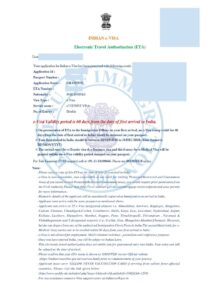What is the Difference Between Electronic Visa and Visa?
Difference Between Electronic Visa and Visa
There are several differences between an electronic Visa and a paper-based visa. The former requires a physical application from the applicant, which includes a trip to the consulate or embassy. The latter involves filling out an online application form and providing passport photos and other supporting documents. The process takes anywhere from 24 hours to several weeks depending on the country and the purpose of the visit. E-Visas also have different validity periods, so make sure to check all the official websites of the country you plan to visit.
In most cases, the difference between an electronic visa and a paper visa is convenience. The applicant can fill out an application form on a smartphone or tablet and upload required documents in a file. Once the documents are uploaded, the application is reviewed to ensure authenticity. E-Visa applications may cost $100 to $200, depending on the country and type of visa. Applicants can pay the fee using a major credit card or debit bank card.
Another significant difference between an e-Visa and a paper visa is the absence of a sticker. Previously, people had to visit the embassy to obtain a visa. However, with the introduction of an electronic visa, this process has become much easier and convenient. More countries are beginning to accept the electronic visa and are expected to continue to do so. This method is more convenient and saves time and money.
In addition to the differences between paper visas, electronic visas can be applied for online, and many countries are implementing electronic eVisa systems for select nationalities. The eVisa system facilitates travel while enhancing security. The application form is easy to fill out and requires less time than a paper visa. The confirmation slip can be printed or emailed, and the airline will look at it before boarding.

What is the Difference Between Electronic Visa and Visa?
What is the difference between an electronic Visa and a paper visa? In general, an electronic Visa allows you to apply online and does not require you to travel to the consulate or embassy. An electronic Visa may be a magnetic strip card that contains vital information about the traveler. On the other hand, a visa on arrival is applied at the airport and requires a physical visa. Both options are available.
E-Visas are also called an “e-Visa” because they allow people to complete the entire process of applying for a visa online. The process can save travelers from long bureaucratic processes by allowing them to submit their application online. The payment for an electronic visa is also made online. When an e-Visa is approved, the authorities will email the person the electronic copy of the visa. However, E-Visas are not yet implemented for work permits or student visas.
An e-Visa allows you to visit India for 180 days after you receive it. This is more than double the previous 30-day allowance for visitors. The only difference between an e-Visa and a visa is the validity. While a visa is valid for 90 days, an e-Visa is only valid for 180 days. It does not come with a travel insurance plan and cannot be extended.